Overview of Corporate Governance Issues for Co-operatives - IFC
Overview of Corporate Governance Issues for Co-operatives - IFC
Overview of Corporate Governance Issues for Co-operatives - IFC
You also want an ePaper? Increase the reach of your titles
YUMPU automatically turns print PDFs into web optimized ePapers that Google loves.
include measures to promote greater participation by members. Education and trainingwill be restructured to meet the needs <strong>of</strong> members so as to encourage them to becomemore involved in the process <strong>of</strong> promoting good governance in their co-<strong>operatives</strong>ocieties. Active and empowered members will participate in the running <strong>of</strong> theirsocieties in terms <strong>of</strong> decision-making, planning and control (CRMP 2005).AsiaAs in the case <strong>of</strong> Africa, studies relevant to corporate governance and co-<strong>operatives</strong> inthe region remain limited and focus mainly on South Asia. However the majority <strong>of</strong>co-<strong>operatives</strong> in Asia share a similar legacy <strong>of</strong> government intervention and colonialism.The co-operative model developed by the British within India has received the mostattention. This derives in part from the fact this co-operative model was then replicatedin other British colonies and was based on unified system with strong central control.The latter feature was not modelled on the UK experience <strong>of</strong> an autonomousco-operative sector and indeed the Indian co-operative system was, in importantrespects, modelled on the German system.This was because the British colonial authorities identified indebtedness as mainproblem holding back rural development in India. The 1904 <strong>Co</strong>-operative CreditSocieties Act was passed to set up credit unions along Raiffeisen principles. This hasbeen characterised as an “interpretation <strong>of</strong> a British <strong>Co</strong>lonial Office <strong>of</strong> a GermanInstitution that presented organizational characteristics that were strange even to Britishbusiness” (Cuevas and Fischer 2006:27).In 1912 a second Act allowed <strong>for</strong> the establishment <strong>of</strong> other types <strong>of</strong> co-<strong>operatives</strong>. Thistradition was later exported to other colonies and characterised as mentioned above bytight control from a central government department <strong>for</strong> co-<strong>operatives</strong> whose registrarhad considerable powers <strong>of</strong> intervention (Johnson 1997).The co-operative tradition inSouth Asia was not fundamentally altered after independence with the state retaining alarge degree <strong>of</strong> control over the co-operative sector. The law was meant to serve as aninstrument <strong>for</strong> achieving economic and social development in rural areas.Unlike Africa, the co-operative sector in South Asia has been noticeably less affected bythe impact <strong>of</strong> Structural Adjustment Programmes and until recently by liberalisationpackages. In India, the co-operative regime in the majority <strong>of</strong> the states remainscharacterised by high levels <strong>of</strong> government control and intervention. Ramesha reportsthat “dormant membership, lack <strong>of</strong> active participation <strong>of</strong> members in management, lack<strong>of</strong> pr<strong>of</strong>essionalism (and absence <strong>of</strong> corporate governance) undue political andbureaucratic intervention have made majority <strong>of</strong> the co<strong>operatives</strong> at the primary levelalmost moribund” (Ramesha 2003:3). There has been much criticism <strong>of</strong> levels <strong>of</strong> stateintervention at district and regional levels and there is an extensive literature discussingthe negative economic and social impacts <strong>of</strong> the current regime.Page 25


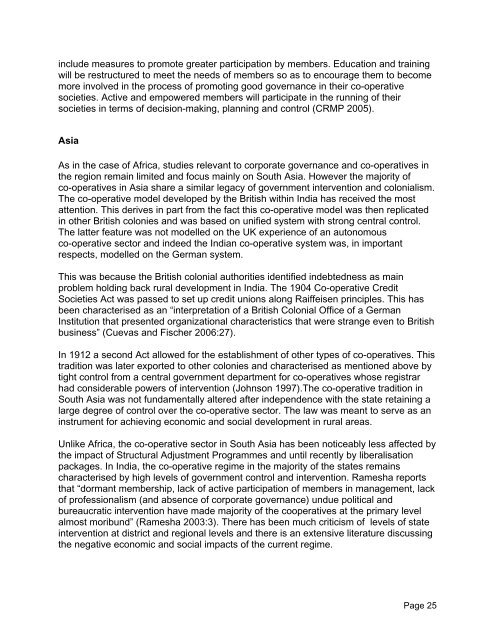
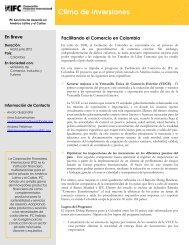
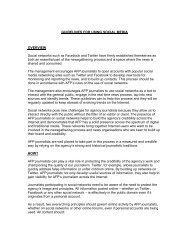
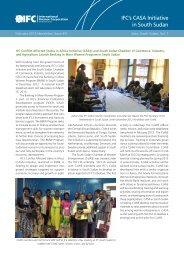
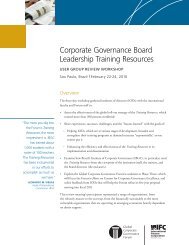


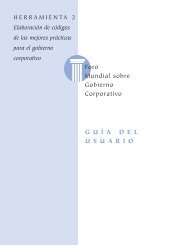

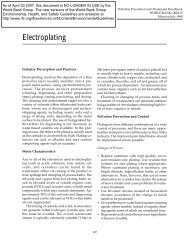

![Print a two-page fact sheet on this project [PDF] - IFC](https://img.yumpu.com/43449799/1/190x245/print-a-two-page-fact-sheet-on-this-project-pdf-ifc.jpg?quality=85)


